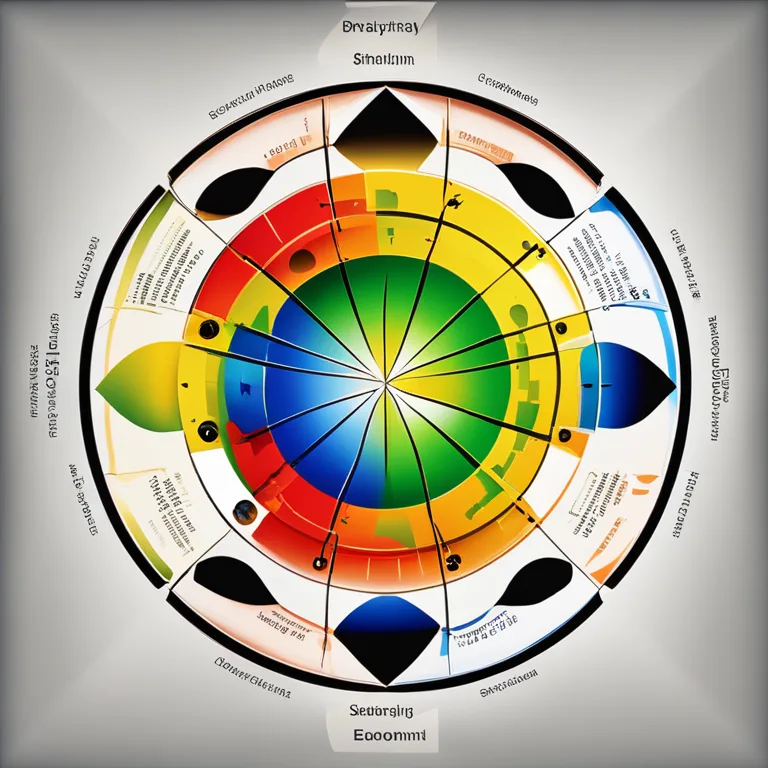
Biorhythms Compatibility: Harmonizing Life Rhythms
Dive into the mysteries of biorhythms compatibility and discover how syncing life's natural cycles can improve your relationships and wellbeing.
article by Adrian Wallace
Introduction to Biorhythms
The concept of biorhythms stems from a belief that our lives are influenced by natural physiological cycles. According to this theory, there are three primary cycles: physical, emotional, and intellectual. Every person's biorhythms begin at birth and oscillate in predictable patterns throughout their life. Understanding one's own cycles can lead to insights about personal well-being and performance. Similarly, recognizing how your cycles align or conflict with someone else’s can offer valuable foresight into interpersonal dynamics. This knowledge becomes particularly relevant when considering the potential for compatibility in various types of relationships.

Assessing Biorhythm Compatibility
Analyzing biorhythm compatibility involves comparing your personal cycles with those of another individual. This can have profound implications for relationships, whether romantic, platonic, or professional. For example, when two people's physical cycles are in tune, they may find that they naturally have more energy when together. Conversely, when one person's emotional cycle is at a low point while the other's is high, they might experience misunderstandings or emotional disconnection. By syncing biorhythms, individuals can potentially find better times for communication, activity, and intimacy.

The Role of Technology in Biorhythms
In the digital age of 2024, technology plays a central role in the analysis of biorhythms. With advancements in software and mobile apps, individuals can easily monitor their own biorhythms and compare them with others. These technological tools help users to anticipate cycles' peaks and troughs, thereby aiding in better planning for critical events such as job interviews, dates, or important discussions. Consequently, technology-enhanced biorhythm tracking has become an innovative tool for those seeking to enhance their relationships and interactions.

Practical Applications of Compatibility Insights
Understanding biorhythms compatibility is not solely for intimate relationships. In the workplace, for instance, leaders can schedule collaborative projects around times when team members’ intellectual cycles are in sync. In sports, coaches may plan intensive training when athletes are at peak physical rhythm. Furthermore, emotional biorhythm synchronization can be important during therapy sessions or family gatherings to facilitate deeper connections and empathetic understanding.

The Skepticism Around Biorhythms
Despite the intriguing possibilities biorhythms present, skepticism remains. The scientific community has debated the validity of biorhythms theory, citing a lack of empirical evidence. Critics argue that life is too complex to be dictated by such simple cycles, and any perceived compatibility may be due to confirmation bias or placebo effect. Advocates, however, suggest that while biorhythms may not be an exact science, they provide a framework for becoming more attuned to one's physiological and psychological patterns, thus offering an additional perspective in pursuit of balanced relationships.
Towards a Balanced Perspective
In conclusion, while biorhythms compatibility offers an interesting lens through which to view personal interactions, it should be considered as one of many tools for enhancing relationships. Individuals keen on optimizing their connections with others may find value in this approach, provided they maintain a balanced perspective and also consider other important factors such as communication skills, mutual respect, and shared values.
Published: 12/28/2023
Modified: 12/28/2023
More predictions
Come back here soon to learn more about yourself and your future


Biorhythm Compatibility & Birthdays
Discover the intriguing connection between your birthday biorhythms and relationship harmony in our insightful article.


Biorhythm Compatibility: Fact Or Myth?
Explore the concept of biorhythm compatibility to discover if there's a real connection between our biocycles and relationship harmony.


Biorhythm Wheel: Unlocking The Secrets
Explore the intriguing world of the biorhythm wheel to understand your physical, emotional, and intellectual cycles for enhanced well-being.